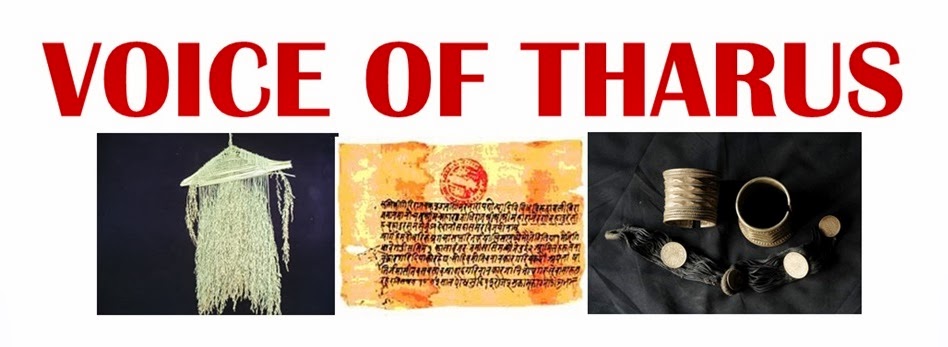Barka Naach
Based on the story of Mahabharat, the Barka Naach is the biggest and most difficult dance performed by the Tharus. It hovers around the song Barkimar which tells the story of Mahabharat. In Tharu language barki means big and mar is a battle.
The dance is performed during the Dashain festival and harvesting season. Tharus believe that the dance brings better harvest and cures diseases and illnesses.
Barka Naach clip uploaded by Nathuram Chaudhary.
Sakhiya Naach
Sakhiya Naach is based on the story of Lord Krishna’s life. The dance is performed during the Dashain festival. In Tharu language sakhi means a friend. As it is danced with friends, it might have got the name Sakhiya.
Sakhiya Naach clip uploaded by Ganga Dagaura.
Sakhiya dance clip uploaded by Lovely Ramu.
Hori Naach
Hori Naach is performed during the Holi festival. It is performed by Rana and Katharia Tharus. The men and women dance throughout the month of Holi.
Hori Naach clip uploaded by Jacques Trevisan.
Maghuata Naach
Performed during the Maghi festival, Maghauta Naach starts from first of Magh and is performed till the third of Magh. It is performed by the women folks.
Dance clip uploaded by Punaram Chaudhary.
Dhumra Naach
Dhumra Naach is performed during the Shukrati/Deepawali festival. It is performed to appease the Chora Devta, a mischievous deity thought to be responsible for infant mortality.
Dhumra Naach clip uploaded by Subash Chandra Chaudhary
Based on the story of Mahabharat, the Barka Naach is the biggest and most difficult dance performed by the Tharus. It hovers around the song Barkimar which tells the story of Mahabharat. In Tharu language barki means big and mar is a battle.
The dance is performed during the Dashain festival and harvesting season. Tharus believe that the dance brings better harvest and cures diseases and illnesses.
Barka Naach clip uploaded by Nathuram Chaudhary.
Sakhiya Naach
Sakhiya Naach is based on the story of Lord Krishna’s life. The dance is performed during the Dashain festival. In Tharu language sakhi means a friend. As it is danced with friends, it might have got the name Sakhiya.
Sakhiya Naach clip uploaded by Ganga Dagaura.
Sakhiya dance clip uploaded by Lovely Ramu.
Hori Naach
Hori Naach is performed during the Holi festival. It is performed by Rana and Katharia Tharus. The men and women dance throughout the month of Holi.
Hori Naach clip uploaded by Jacques Trevisan.
Maghuata Naach
Performed during the Maghi festival, Maghauta Naach starts from first of Magh and is performed till the third of Magh. It is performed by the women folks.
Dance clip uploaded by Punaram Chaudhary.
Dhumra Naach
Dhumra Naach is performed during the Shukrati/Deepawali festival. It is performed to appease the Chora Devta, a mischievous deity thought to be responsible for infant mortality.
Dhumra Naach clip uploaded by Subash Chandra Chaudhary



